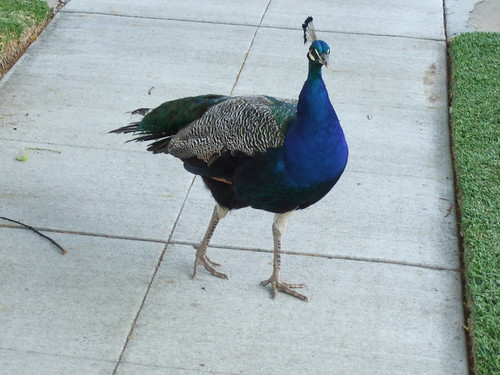The Care and Feeding of a Flickr Account
 The online photo-sharing service Flickr makes claims to a particular kind of public rhetoric by using the trope of the "photostream" to establish some of the norms of the user community. It's a metaphor that suggests metonymy, a chain of related items but it also draws upon the associations we tend to make with small rivers and therefore suggests the organic, the ephemeral, and the subjective.
The online photo-sharing service Flickr makes claims to a particular kind of public rhetoric by using the trope of the "photostream" to establish some of the norms of the user community. It's a metaphor that suggests metonymy, a chain of related items but it also draws upon the associations we tend to make with small rivers and therefore suggests the organic, the ephemeral, and the subjective.In one help forum, when a new Flickr user asked for a definition of the term "photostream" by others, this was the response from Wooble:
Organization based on anything other than order of upload is done through sets, collections, tagging, and, for those who hate the photostream metaphor an insist on trying to swim against the current, lying to the system about when photos were uploaded to make the stream appear out of order. This is about as frustrating as trying to make the water in a real stream flow out of order. It's best to just go with the flow.
As if to illustrate his point about the futility of trying to develop classification schemes for images, among Wooble's most recent contributions to his photostream, alongside the more conventional family pictures that might be associated with the traditional sharing practices of those in social networks, was this photograph of ice in a glass. Of course, it's a kind of statement about temporality, this ice, since Flickr is as much about the moment that is frozen as it is about the moment that flows.
In any case, the idea that Flickr is about discrete moments of perception is certainly part of its appeal. For example, I've been known to use it to post photographs of cell phone trees that I chance upon or to map minibars of the world. Futhermore, Flickr encourages people to post photographs that are outside of genres such as "family album" or "travelogue," which often could be described as genre pictures or still lifes. Julian Bleecker's photostream includes a Pepsi cap embedded in concrete cracks or a freshly squeezed lemon.
I've been thinking about this because of a picture that I saw this morning posted by John Aboud called "Peacock on my sidewalk." People often use Flickr for this kind of confluence of the usual and the unusual. If only you could have a kind of Flickr for audio clips, for snatches of interesting conversation, but ambient sound is usually gone before it can be recorded.
Because Flickr makes Creative Commons' licenses easily available, its images are also frequently repurposed for other kinds of rhetorical productions, including those that could be described as database-driven or representative of a database aesthetics, the theorizing of which is often associated with the work of Lev Manovich. PROJEK IAGHT(tm) uses images from Google and Flickr with search terms like "graffiti, body art, party, hiphop, kromp, iaght, DJ, breakdance, skateboard," and there is Blaise Aguera y Arcas's famed demo of Notre Dame images.
Labels: database aesthetics, information aesthetics, participatory culture, visual culture

0 Comments:
Post a Comment
<< Home